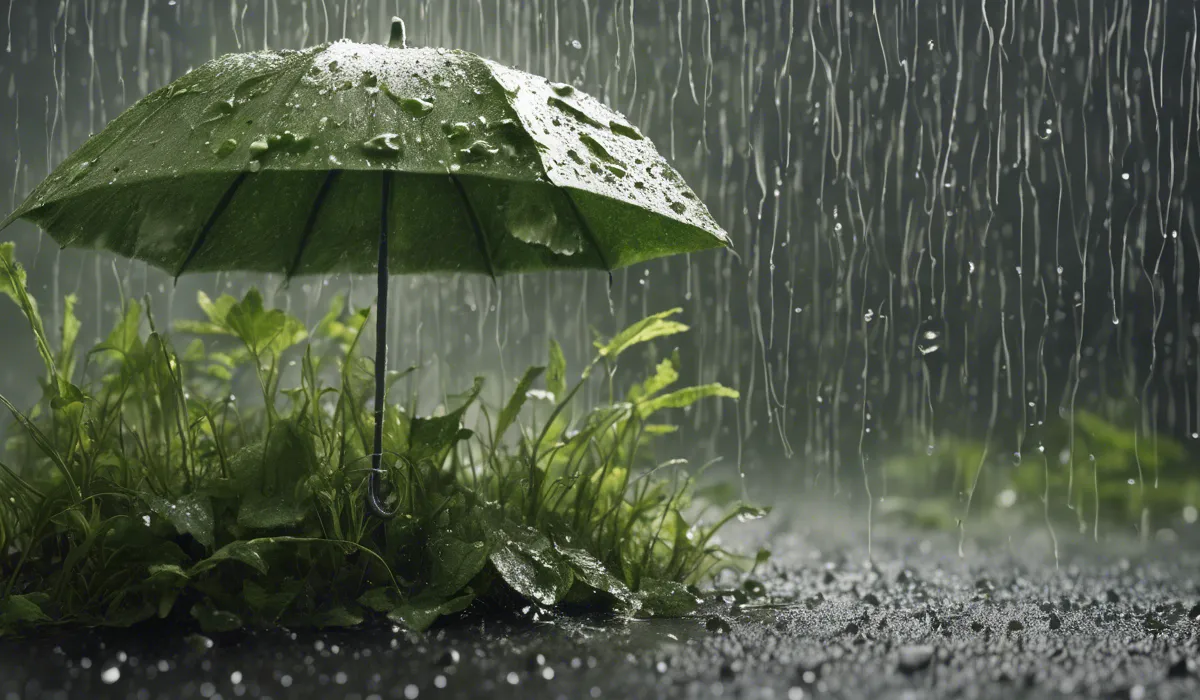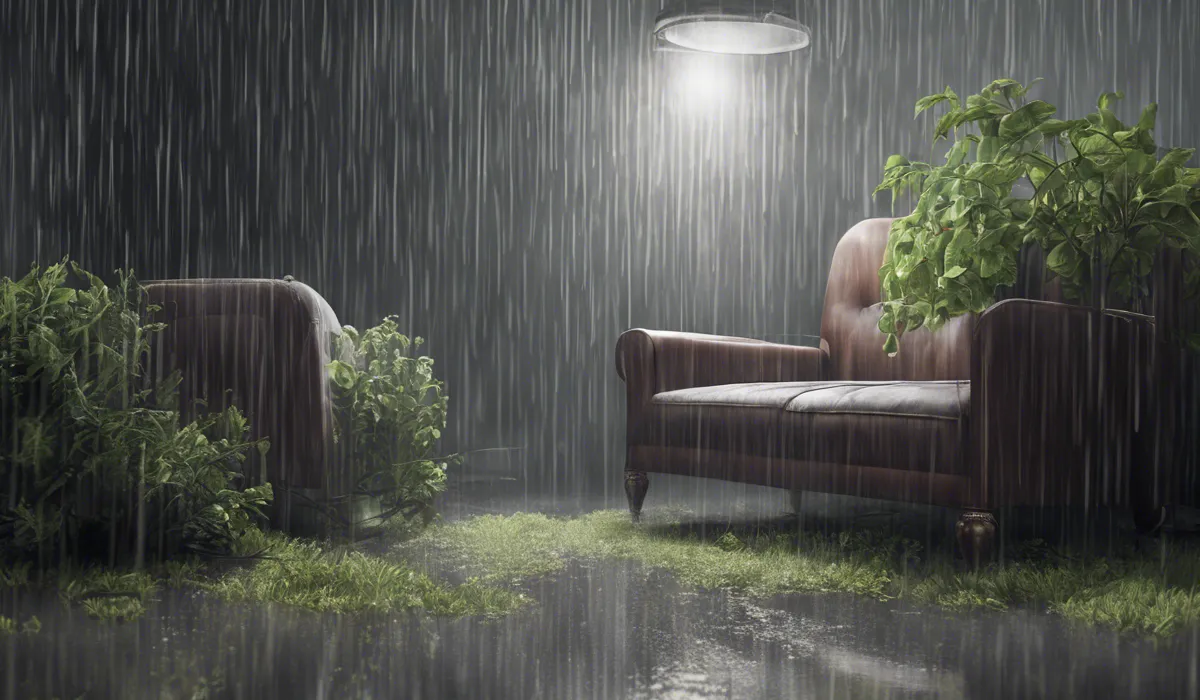Yes, rain can exacerbate mold allergies. It increases humidity, which fosters mold growth. Mold spores then disperse more easily in the air, potentially worsening allergy symptoms for individuals sensitive to mold.
Relationship Between Rain and Mold Growth

Increased Moisture from Rainfall
Rain is an essential component of our ecosystem, bringing life-giving water to plants and replenishing natural water sources.
However, it also contributes significantly to increased moisture levels in the environment. When it rains, water can accumulate on various surfaces, seep into the ground, and raise the overall humidity in the air.
This moisture creates an ideal setting for mold to thrive, as mold spores are always on the lookout for damp areas to settle and multiply.
Mold Spore Proliferation Due to Moisture
Mold spores are a natural part of the outdoor environment, but when they encounter moist conditions, they can quickly grow into colonies.
The role of moisture in mold spore proliferation cannot be overstated; it is the single most crucial factor in mold growth.
Spores that would otherwise lie dormant spring to life in the presence of water, leading to a rapid increase in mold presence, which can aggravate allergy symptoms in sensitive individuals.
Common Areas for Mold Growth After Rain
Following rainfall, certain areas are more prone to mold growth. Outdoors, mulch piles, piles of damp leaves, and shaded areas where the ground stays wet are hotspots for mold.
Indoors, basements, bathrooms, and kitchens with poor ventilation can also become breeding grounds for mold if moisture from rain is not adequately managed.
Seasonal Mold Allergy Patterns and Rain
Individuals with mold allergies may notice that their symptoms worsen during certain seasons.
This often correlates with rainy periods when moisture levels are high, leading to increased mold growth.
Spring showers and fall rains are particularly known for aggravating mold allergy symptoms due to the combination of wet conditions and organic matter, such as fallen leaves, that serve as food for mold.
Impact of Rain on Mold Allergen Potency and Distribution

Release and Dispersal of Mold Spores
Rain not only contributes to the growth of mold but also plays a part in the release and dispersal of mold spores into the air.
As raindrops hit the ground, they can disturb mold colonies and launch spores into the air. These spores can then be inhaled by people, leading to allergic reactions in those who are sensitive.
‘Mold Bloom’ and Its Effects on Allergies
A ‘mold bloom’ is a term used to describe the sudden increase in mold growth following rainfall.
This phenomenon can have significant implications for allergy sufferers. A bloom can result in a substantial surge of mold spores in the environment, which can trigger or worsen allergy symptoms such as sneezing, coughing, and itchy eyes.
Indoor vs. Outdoor Mold Concentrations After Rain
While outdoor mold spore concentrations can increase significantly after rain, indoor concentrations can also rise if moisture penetrates the building.
Good ventilation and moisture control are crucial in preventing indoor mold spore levels from reaching problematic levels.
Mold Spores Becoming More Allergenic Post-Rain
Scientific research suggests that mold spores may become more allergenic or active following rain.
The combination of increased moisture and the physical disturbance caused by raindrops can result in spores that are more likely to cause allergic reactions.
Management and Prevention Strategies

Reducing Indoor Humidity Levels
To prevent mold growth indoors, it is important to maintain low humidity levels. Using dehumidifiers, ensuring proper ventilation, and fixing leaks promptly are effective strategies to keep indoor humidity in check.
Reducing Mold Spore Exposure
Limiting exposure to mold spores is crucial for people with mold allergies.
This can be achieved by staying indoors during and immediately after heavy rains when outdoor spore counts are high, using air purifiers to reduce indoor spore counts, and wearing masks when performing outdoor activities such as gardening or raking leaves.
Cleaning and Maintenance to Minimize Mold
Regular cleaning and maintenance can help minimize mold proliferation, especially in damp conditions.
This includes cleaning gutters, repairing roof leaks, and ensuring that water does not accumulate around the foundation of the house.
Inside, using mold-resistant products in bathrooms and cleaning visible mold with appropriate solutions can help keep mold at bay.
Professional Mold Assessment and Remediation
For severe cases of mold infestation, professional mold assessment and remediation may be necessary.
These experts can identify hidden mold, determine the extent of mold growth, and remove it safely, ensuring that the indoor environment remains healthy for those with allergies.
FAQs About Rain and Mold Allergies
Does rain increase the risk of mold allergies?
Yes, rain can increase the risk of mold allergies by creating damp conditions that promote mold growth, leading to higher concentrations of mold spores in the air.
Can rain cause mold allergy symptoms to worsen?
Rain can exacerbate mold allergy symptoms by causing mold spores to disperse more easily in the air after periods of high humidity and wet conditions.
How does humidity from rain affect mold growth?
Higher humidity from rain creates an ideal environment for mold to grow, particularly in indoor areas that lack proper ventilation.
What can I do to mitigate mold allergies during rainy seasons?
To mitigate mold allergies during rainy seasons, keep indoor humidity levels low, use dehumidifiers, and ensure proper ventilation to reduce mold growth.
Are mold allergy symptoms immediate after rain?
Mold allergy symptoms can appear soon after rain as mold spores spread more quickly in wet conditions, but the timing can vary depending on individual sensitivities and the extent of mold growth.
Final Thoughts
Rain can indeed aggravate mold allergies by increasing environmental humidity, which promotes mold growth.
Elevated moisture allows mold spores to disperse more readily through the air, leading to heightened allergy symptoms for those with sensitivities to mold.
